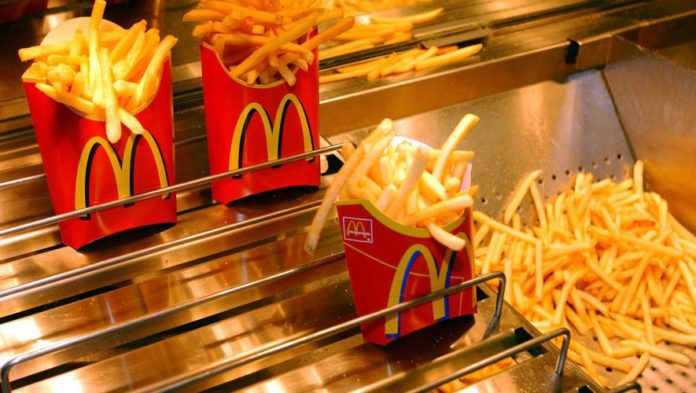While some turn waste cooking oil into soap, others turn it into 3D Printing resin. Researchers at the University of Toronto have found a second life of cooking oil.
They have been able to transform cooking oil – from the deep fryers of a local McDonald’s – into a high-resolution, biodegradable 3D printing resin.
In the January-February issue, we discussed the secrets of resin 3D Printing (pp -39-44). Despite its ability to produce accurate 3D Prints and other advantages, resin 3D Printing is a material that might remain dangerous for the user.
Researchers from Toronto address the topic from another angle: the plastics made from waste cooking oil break down naturally unlike conventional 3D printing resins. Not to mention the economical side of the problem: such type of resin would remain cheaper to fabricate.
“The reasons plastics are a problem is because nature hasn’t evolved to handle human-made chemicals,” says Andre Simpson, a professor at U of T Scarborough’s department of physical and environmental sciences who developed the resin in his lab.
“Because we’re using what is essentially a natural product – in this case fats from cooking oil – nature can deal with it much better.”
The researchers explain that it was really tough to find old cooking oil from a restaurant’s deep fryers to test in the lab. Despite contacting several major national fast food chains, the only one that responded was McDonald’s. The oil used in the research was from one of the hamburger chain’s Scarborough restaurants.
The team used a straightforward one-step chemical process in the lab, using about one litre of used cooking oil to make 420 millilitres of resin. The resin was then used to print a plastic butterfly that showed features down to 100 micrometres and was structurally and thermally stable, meaning it wouldn’t crumble or melt above room temperature.
“We found that McDonald’s waste cooking oil has excellent potential as a 3D printing resin,” says Simpson, an environmental chemist and director of the Environmental NMR Centre at U of T Scarborough.
Used cooking oil is a major global environmental problem, with commercial and household waste causing serious environmental issues, including clogged sewage lines caused by the build-up of fats.
While there are commercial uses for waste cooking oil, Simpson says there’s a lack of ways to recycle it into a high value commodity such as a 3D printing resin. He adds that creating a high value commodity could remove some of the financial barriers with recycling waste cooking oil since many restaurants have to pay to dispose it.
Conventional high-resolution resins can cost upwards of US$525 (475,93€) per litre because they’re derived from fossil fuels and require several steps to produce. All but one of the chemicals used to make the resin in Simpson’s lab can be recycled, meaning it could be made for as low as US$300 (272,12€) per tonne, which is cheaper than most plastics. It also cures solid in sunlight, opening up the possibility of pouring it as liquid and forming the structure on a work site.
Another key advantage is biodegradability. The researchers found that burying a 3D-printed object made with their resin in soil lost 20 per cent of its weight in about two weeks.
“If you bury it in soil, microbes will start to break it down because essentially it’s just fat,” Simpson says.
“It’s something that microbes actually like to eat and they do a good job at breaking it down.”
The results of the research are published in the journal ACS Sustainable Chemistry & Engineering.
Remember, you can post free of charge job opportunities in the AM Industry on 3D ADEPT Media or look for a job via our job board. Make sure to follow us on our social networks and subscribe to our weekly newsletter : Facebook, Twitter, LinkedIn & Instagram ! If you want to be featured in the next issue of our digital magazine or if you hear a story that needs to be heard, make sure to send it to contact@3dadept.com.






